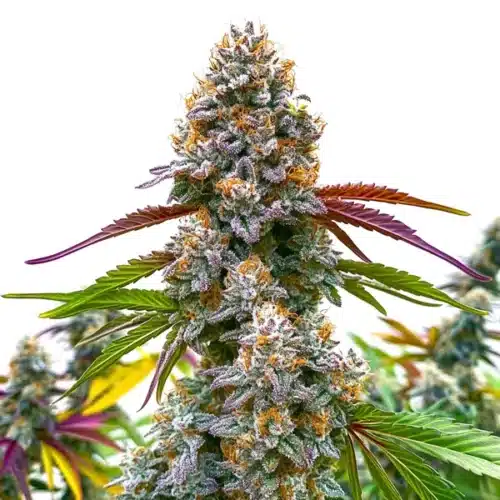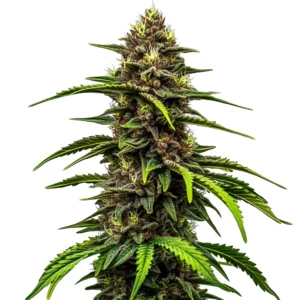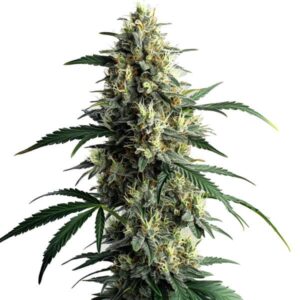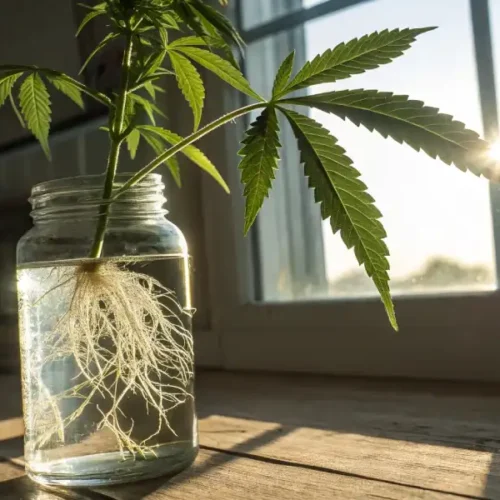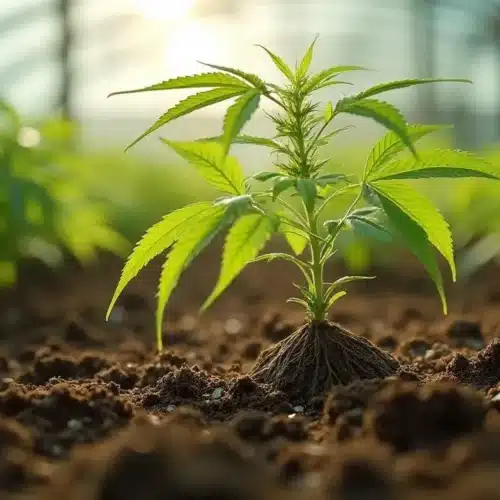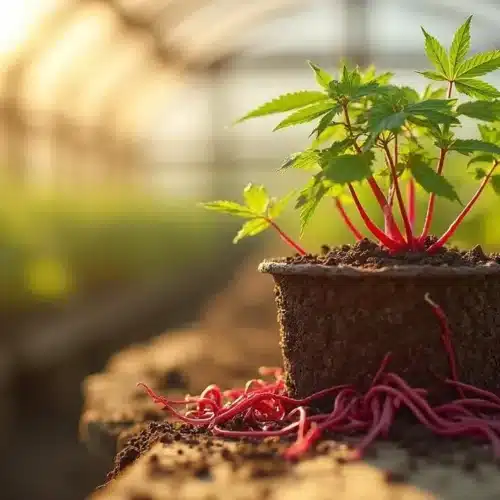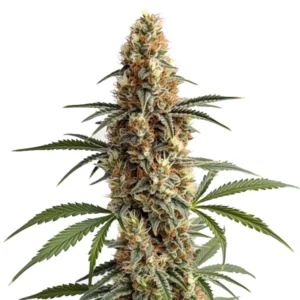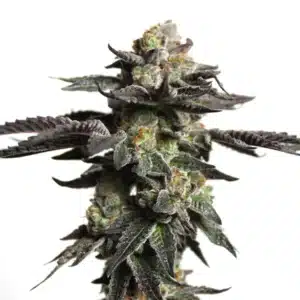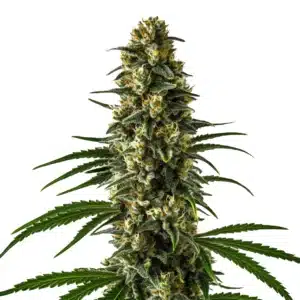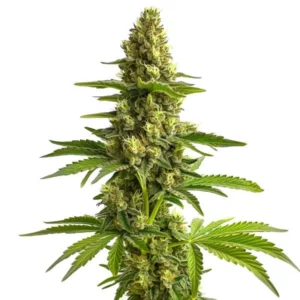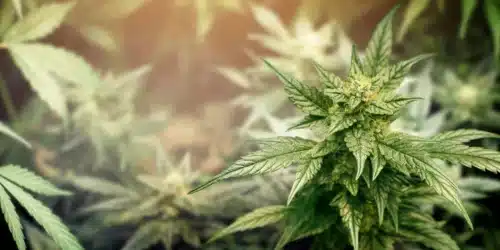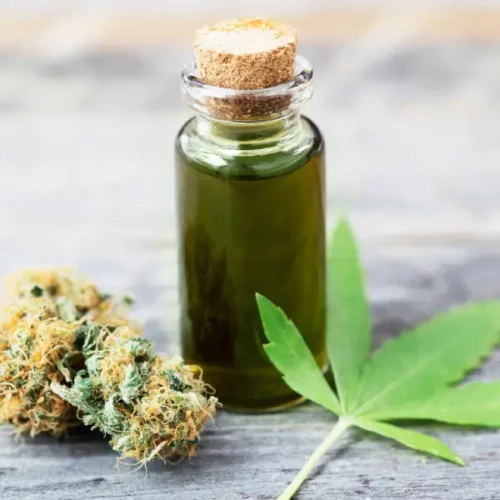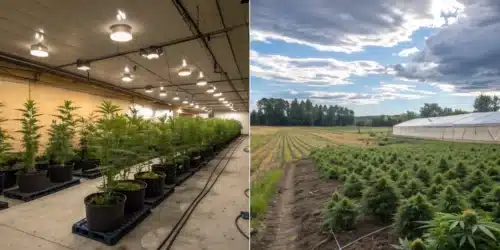There are different colloquial or slang forms to call marijuana. Also, over the years, new terms have been coined for the way marijuana is consumed. Do not forget that weed concentrates and extractions have received their terminology, as has also happened with the forms of marijuana consumption and indoor grown marijuana slang. Even basic measurement terms like quarter of weed have entered everyday cannabis lingo. Don’t forget that when it comes to growing, some growing processes and styles also have terms that define them among the community of weed growers, including indoor grown weed slang.
Weed Slang 101
Weed: “Weed” surged in popularity during the late 1980s and early 1990s. Yet, the origins of why this term became synonymous with cannabis remain largely unknown. Like many other slang terms, the speculation surrounding its origin is easy to make. A weed typically refers to an invasive plant thriving in the wild and often in harsh conditions. Although not scientifically categorized as a weed, cannabis shares the hardy growth characteristics of one and is found all over the world. Moreover, it was deemed “unwanted” or “invasive” by parents and authorities of that era.
Recommended Strains
Critical Daddy Purple
 THC: 19%
THC: 19% Type of seed: Feminized
Type of seed: Feminized Phenotype: Mostly Hybrid
Phenotype: Mostly Hybrid Day to flower: 8 - 10 weeks
Day to flower: 8 - 10 weeks
Critical Purple Auto
 THC: 20% - 24%
THC: 20% - 24% Type of seed: Autoflowering
Type of seed: Autoflowering Phenotype: Mostly Indica
Phenotype: Mostly Indica Day to flower: 10 - 12 weeks
Day to flower: 10 - 12 weeks
Nug: This slang term denotes a chunk of high-quality cannabis bud material. It derives from the shortened form of “nuggets” and describes the appearance of dried and cured bud pieces after being removed from the plant.
Bud: Similar to “nug,” this term refers to a specific part of the cannabis plant.
Dank: While typically used to describe damp and unpleasant areas, “dank” also refers to premium cannabis. Just as skunky smells may be undesirable but desirable in cannabis aromas, a “dank” attribute in cannabis indicates quality. More recently, “dank” has evolved into a general positive descriptor commonly used by younger generations to refer to memes or delicious foods.
Reefer: Though its precise origin is unclear, one possible source is the Spanish term “grifa,” which refers to cannabis. This term gained popularity as slang following the release of Reefer Madness (1936), an early anti-cannabis film known for its absurd plot.
Herb: Ground cannabis, resembling common culinary herbs like basil or oregano when shredded. Cannabis is recognized as an herbal remedy due to its natural properties and is often used as a garnish in weed-infused dishes.
Chronic: Originally the name of a hybrid strain, this term is used colloquially by cannabis enthusiasts to describe potent cannabis. The interpretation varied by region: on the East Coast, it referred to cannabis mixed with cocaine, while on the West Coast, it used it for high-quality weed. Its meaning solidified in the ’90s West Coast rap scene with Dr. Dre’s album The Chronic.
Marijuana: Despite its widespread recognition, this slang term has a complex and problematic history, leading many to prefer the term “cannabis.” Efforts to rebrand the plant as “cannabis” stem from its origins during the criminalization era, where it was associated with Spanish-speaking migrant workers and illegal immigrants to create a sense of danger. Advocates for legalization and the cannabis industry promote using “cannabis” to remove stigma.
Ganja: One of the oldest English slang terms for cannabis, dating back to before 1700, derived from the Sanskrit word “gañjā.” Popularized in Jamaica, it gained prominence in the United States after Peter Tosh used it in his song Legalize It (1975).
Flower: Refers to cured cannabis in its plant form, distinct from extracts or edibles.
Sinsemilla: A fusion of the Spanish words “sin” (without) and “semilla” (seed), directly translates to “without seeds.” Therefore, sinsemilla refers to cannabis flowers that haven’t undergone pollination during growth, resulting in seedless buds. This term is widely accepted within the cannabis community, especially for consumers, as the majority of products encountered, including plants and derivatives, are typically sinsemilla-based.
Promos & Deals
Growing cannabis Slang
Calyx: A calyx, also known as a bract, constitutes a component of the female cannabis flower (illustrated in a picture and diagram). What we commonly refer to as cannabis “buds” or “flowers”—such as those found in a typical quarter of weed—are essentially an aggregation of “calyxes” clustered closely together and stacked atop one another. Without harvesting for their psychoactive properties, calyxes would serve as the receptacles for any seeds the plant produces post-pollination.
Clone: Just as the term suggests, a clone is a nearly exact duplicate of the plant from which it originated. Essentially, a small portion of a cannabis plant is removed and treated so that it can develop independently; this process is known as “cloning.” This “cutting” will eventually become a replica (or clone) of its parent plant.
Coco coir is a user-friendly, forgiving growing medium ideal for beginners. Made primarily from coconut husks, it is easy to use and renewable, making it environmentally friendly. However, using coco coir requires the addition of perlite to improve drainage. Perlite is not renewable, so coco coir also loses its renewable status.
Compost tea, also known as worm tea, is an aerated solution typically made from worm castings (feces). This solution is administered to plants as a “gentle” method of introducing nutrients and beneficial bacteria without the risk of nutrient burn or toxicity.
Curing: This is the final stage of cannabis cultivation. During this stage, buds are placed in a sealed container and given time to undergo natural processes. Curing for at least three weeks can enhance aroma, flavor, and perceived potency and eliminate any “hay” smell.
Cutting: A “cutting” is used for a clone before successfully establishing roots. Once a cutting develops roots and can sustain itself, it is called a “clone.”
FIM: FIM, short for “F*ck I Missed,” offers an alternative approach to the conventional “topping” method for disrupting the apical dominance of plants. Rather than completely removing the top of the plant along with the stem, FIM involves removing only a portion of the top while preserving the stem. However, the outcomes of FIM can vary.
Seedling: In cannabis cultivation, seedling refers to a young plant that has progressed beyond the seed stage but hasn’t yet reached a size where it’s commonly referred to simply as a ‘plant.’ This phase transitions once the plant develops two or more sets of fully formed leaves, marking the end of the seedling stage.

Weed Measurements Slang
Sack: – 20-sack, 40-sack, dubsack, typically any term ending in “-sack,” denotes the size or value of money spent on a bag of cannabis. In the past, a 20-sack was commonly referred to as a gram.
Gram (Also called a ‘Dub’ or a 20-sack): While grams may not be the official weight unit in the U.S., they reign supreme in the cannabis (and broader drug) market, following the metric system. Usually, it’s the smallest amount of cannabis available for purchase, although some dealers or shops may offer pre-rolled joints or 10-sacks/half grams if you’re fortunate.
Half-Eighth (Also called a ‘Teenth’): Progressing from a gram, a half-eighth typically consists of 1.7 grams of high-quality cannabis. The term stems from the bag’s size being half that of an eighth.
Eight: In the realm of cannabis measurements, an eighth equates to 3.5 grams or about 1/8 of an ounce, serving as a familiar “small” portion, akin to a six-pack compared to a 30-rack.
Quarter of weed: Moving up, a quarter, also known as a quad, stands at 7 grams or precisely one-fourth of an ounce.
Half: Doubling that amount brings us to a half, comprising 14 grams or exactly half an ounce of cannabis.
Zip: Refers to an ounce, often considered a single unit when discussing larger quantities, deriving its name from the original preferred baggies, Ziploc. In essence, your local dealer would package an ounce of cannabis in a Ziploc bag and hand it over as a “zip.”
Weed Slang 420 and 710
Hit: In the realm of cannabis consumption, “taking a hit” refers to the act of inhaling or otherwise consuming cannabis. Whether it’s a puff from a vape pen, an inhalation from a bong, or a drag from a joint, each instance is considered a “hit.”
Session or Sesh: This term denotes the activity of gathering together to consume cannabis for a specific duration of time.
Puff Puff Pass: This phrase embodies an essential aspect of cannabis etiquette. Within a smoking circle, the norm is to adhere to the “puff puff pass” rule, meaning one should never take more than two puffs or hits from a joint or blunt before passing it to the next person.
Throw 5 On It: This phrase is often used to express willingness to contribute to the cost of what’s being smoked or consumed (be it food, alcohol, etc.). Originating from the common practice of rolling blunts with a gram of weed, with a gram typically costing $20, the phrase suggests each person contributing $5 to split the cost of the blunt among four individuals.
Wood/Dutch/Swisher: Informal terms referring to commonly used blunt wraps. “Wood” denotes a Backwood, “Dutch” signifies a Dutch Master (also known as a Dutchie), and “Swisher” refers to common cigarillos typically found at most gas stations.
420: In the 1970s, California teenagers devised a covert method to discuss their after-school plans by using their meeting time as a discreet signal. They eventually condensed this phrase to the time they frequently gathered after track practice, 4:20 pm. Shortly after, they adopted the number 420 as a code for consuming cannabis. Today, 420 holds significant importance in cannabis culture, serving as an informal holiday for many users. Although it’s no longer a secret code, it remains a convenient way to convey a message. If you’re with friends around 4:20 pm, someone will likely acknowledge the time, saying, “It’s always 420 somewhere!”
710: Unlike 420, which encompasses all aspects of cannabis culture, 710 (or July 10th) pertains explicitly to oil and concentrates, such as wax, shatter, budder, and resin. When flipped upside down, 710 resembles the word OIL, hence its significance. While less widely recognized than 420, dispensaries often offer discounts on dab tools, oils, and concentrates on this date. Identifying as 710-friendly is a straightforward way to communicate comfort with these products.
Safety Meeting: A vintage slang term for a brief cannabis break, commonly used to discreetly inquire if coworkers were interested in joining. It’s casually mentioned as an opportunity to smoke, typically between tasks or obligations.
Hot Box: Hot boxing involves smoking cannabis in a confined space, such as a car or bathroom, to fill the area with smoke, theoretically intensifying the high with each breath. Ambitious smokers may attempt to hotbox larger rooms.

Marijuana Smoking Slang Terms
Blunt: Typically, a cannabis smokable is wrapped in tobacco and rolled. Generally holds at least one gram of cannabis.
Joint: Commonly, a cannabis smokable rolled in paper or hemp, often with a filter or “crutch“. It resembles a hand-rolled cigarette and contains 1/4 gram or more of cannabis.
Spliff: A joint or blunt rolled with a blend of cannabis and tobacco, often made by hollowing out a cigarette. There are also herbal spliffs available containing various plants and herbs.
Vape: A handheld (or tabletop) device that vaporizes the cannabinoids in your products rather than burning them, allowing consumers to enjoy the benefits and flavor of their product without the irritants associated with smoking and inhaling burnt ash.
Bong: A tube-shaped water filtration pipe that enables consumers to take significant hits of cannabis with minimal smoke wastage.
Bowl: (Also referred to as a spoon). Typically, a spoon-shaped handheld device with a top-facing bowl area for holding ground cannabis and a “carb” hole on one side to clear the smoke. Glassware like a bong or bowl makes an excellent gift for weed enthusiasts. Also known as a “piece,” some individuals become so attached to their glassware that they name it.
Chillum: A straight-hand pipe without a carb, usually large enough for a few hits and ideal for small groups or personal use. It was initially designed to be held and hit by cupping your hands around it rather than placing your mouth on it.
Bat: (Also known as a ‘one-hitter’). A small pipe, often resembling a cigarette, kept in a dugout (a hollow wooden case for packing cannabis) and holding 1-2 hits of cannabis. It needs to be reloaded each time.
Rig: A consumption device modified for use with concentrated cannabis options (see “dabs” below). These pieces feature a nail instead of a bowl for placing dabs instead of flowers.
Torch: A blowtorch or heat gun used to heat quartz, titanium, and glass nails to vaporize concentrates.
Nail: The skillet-shaped bowl replacement on rigs for vaporizing concentrated cannabinoids. The dish is heated, and concentrates are placed onto the hot surface to release cannabinoid vapors.

Slang Cannabis Concentrates and Extraction
Dabs: These are highly concentrated versions of cannabis compounds extracted from the raw plant. This specific type of cannabis has generated plenty of new terms and slang within the weed community.
Solvents: A solvent is any chemical that dissolves a solid, liquid, or gas into a solution. In the cannabis realm, a diverse range of solutions is utilized to create concentrates with varying potencies, terpene profiles, and textures. Popular solvents include butane, alcohol, and dry ice (or liquid CO2).
Live Resin: This form of cannabis concentrate was initially developed by Kind Bill and Giddyup in Colorado. Live resin is crafted by harvesting cannabis plants before they fully flower, then freezing the plant material instead of allowing it to complete its blooming cycle, drying, and curing. This unique process yields concentrates with significantly higher terpene contents, often marketed as Live Diamonds, Live Sauce, Live Wax, Live Badder, Live Sugar, and “full spectrum” extracts.
FAQs
What is a calyx in a cannabis plant?
A calyx, also known as a bract, is a key part of the female cannabis flower. It forms the base of what we commonly call buds or flowers and serves as the protective layer for seeds in pollinated plants.
Why are calyxes important when buying a quarter of weed?
Calyxes make up the dense clusters of trichome-rich material that are typically found in high-quality cannabis buds. When you purchase a quarter of weed, much of the weight and potency comes from the aggregation of these calyxes.
Do calyxes affect the potency of cannabis?
Yes, calyxes are rich in trichomes, which contain cannabinoids like THC and CBD. The more developed and resinous the calyxes are, the higher the potential potency and aroma of the cannabis flower.

